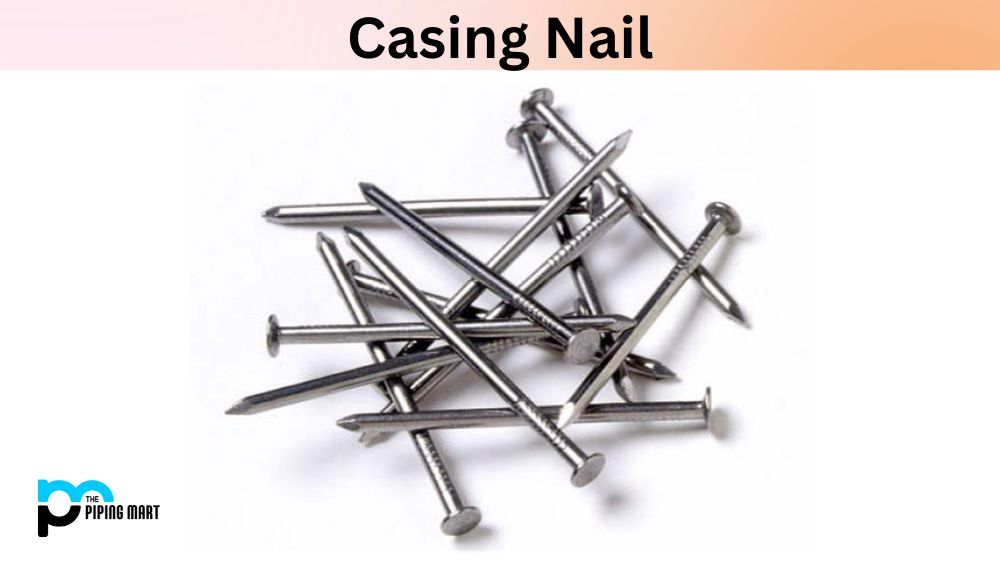If you’re involved in construction work or interior carpentry, you must have come across the term “casing nails.” These nails are critical in woodworking and home improvement projects, but only a few know much about them. In this blog post, we’ll delve into what casing nails are, their properties, and how you can use them. So, whether you’re a DIY enthusiast or a professional carpenter, keep reading to learn more!
What is Casing Nails?
Casing nails are large headed, extra thick wire nails that come in a variety of sizes. They’re typically used for door and window trim, baseboard molding, and other interior trim applications. The head is designed to provide a more finished appearance than regular nails. Casing nails have been specifically developed to match the grain of your woodwork while providing superior holding power compared to traditional nail heads.
Casing Nails Properties:
Most casing nails are steel and coated with a layer of rust-resistant material, such as galvanized or stainless steel. The coating helps to prevent corrosion and rust, which can compromise the integrity of the fasteners and the wood it is attached to. Moreover, the slender design and smaller head size of casing nails make them less likely to split the wood or leave noticeable nail holes.
Casing Nails Uses:
Casing nails are primarily used for finishing work, such as installing baseboards, window and door casings, and crown moulding. They are also useful for attaching other decorative elements, such as chair railings, picture frames, and shelving. In addition, casing nails can be used for exterior carpentry projects, such as attaching siding, decking, and fascia boards.
Casing Nails Application and Precautions:
When using casing nails, it’s important to be cautious to prevent injury or damage to the woodwork. Wear protective gear, such as goggles or glasses, to prevent debris from flying into your eyes, and avoid driving the nails too deeply into the wood or hitting neighbouring parts. Ensure that you have selected the right nail size and type for each part of the project and that the wood is correctly primed and secured before attaching the nail.
How to Use Casing Nails:
The key to using casing nails effectively is ensuring you have the right size and type of nail for the job. For example, if you’re attaching baseboards to drywall, you’ll need nails at least 2 inches long and 15-gauge thick. If you’re attaching exterior siding, you’ll need nails at least 3 inches long and made of galvanized or stainless steel. Use a nail gun or hammer to drive the nails into the wood at an angle for a secure and precise fit.
Conclusion:
Casing nails are a versatile and essential component in woodworking and finishing work. Their unique properties make them an ideal choice for attaching, trimming and moulding projects, both indoors and outdoors. Using the right size, type, and careful application, you can achieve beautiful and lasting woodwork that impresses your clients, friends, and family. This blog post has provided valuable information about casing nails.
Meet Heer, a dynamic and driven writer learning tricks of her trade in the metal industry. With a background in Digital Marketing, Heer brings a unique perspective to her writing, sharing valuable insights. Apart from blogging she like reading and hiking.




